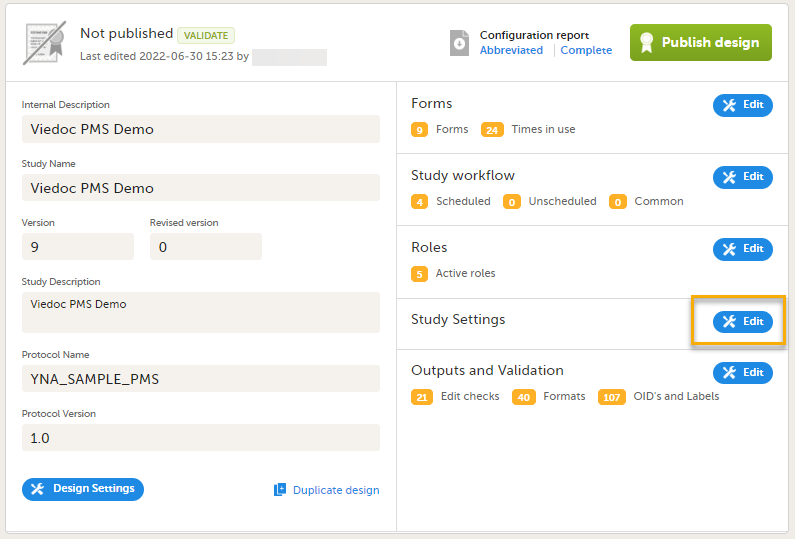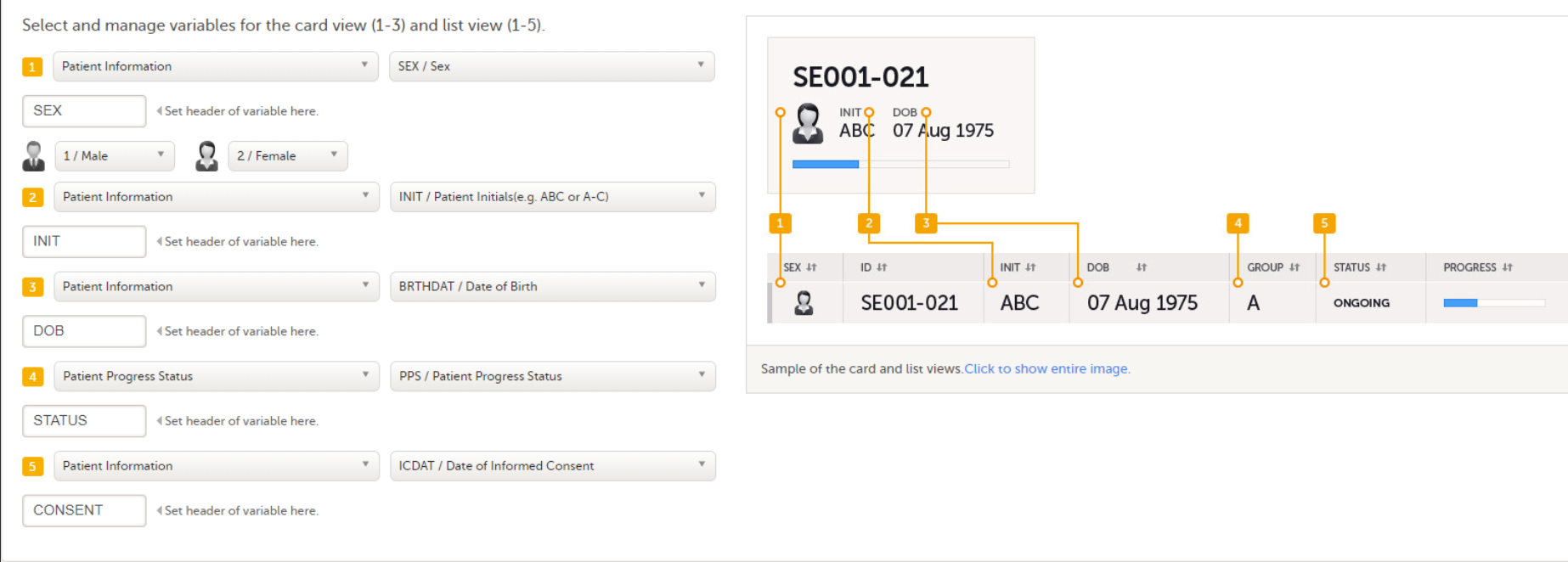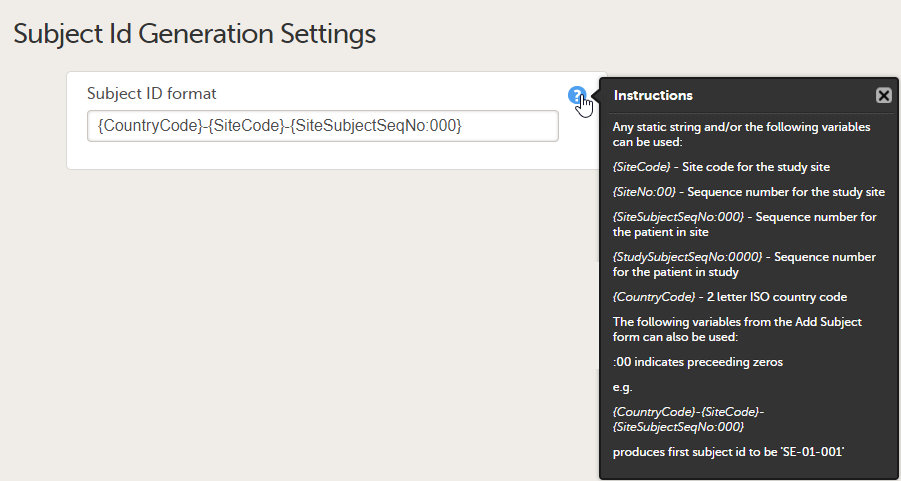Study Settings
Introduction
On the Study Settings page, you can configure other settings useful for your study.


Below is a summary of each menu. For more information, select the relevant page links.
Selection View Settings
The information to be displayed on the subject card is set on the Selection View Settings page. The subject cards are displayed on the Selection page in Viedoc Clinic.

Subject ID Generation Settings
The format for the Subject ID, used to identify a subject within the system, can be configured on the Subject ID Generation Settings page under Study Settings > Subject ID generation settings. The Viedoc default configuration consists of the country code followed by the site ID and finally the consecutive subject ID. This can be changed by modifying the contents of the text field:

SDV Settings
Note! Not available for PMS studies. The Source Data Verification (SDV) setting enables you to choose which forms and items to require SDV in your study.

Miscellaneous
The Miscellaneous section is for various settings that don't fit in anywhere else.
Currently you can choose to enable/disable the need for entering a reason when a field is left blank, that is, when confirming data as missing in Viedoc Clinic.

Alerts
By setting up an alert in your study you can notify users about important occurrences in the data. You can set up alerts that are issued in defined conditions (for example, in case of a Serious Adverse Event). For more information. see Alerts.
Note! For Japanese PMS studies, there is a setting where you define which type of change that will trigger the alert. For more information, see Alert triggers for Japanese PMS studies
Subject Status
The subject status calculations are used in Viedoc in the following places:
-
Metrics in Clinic
-
Exporting data in Microsoft Excel Open XML, CSV and ODM
In the Subject status settings, the following statuses are defined:
-
Screened subjects
-
Enrolled subjects
-
Completed subjects
-
Withdrawn subjects
For more information, see Subject status
RTSM Settings
Viedoc offers support for randomization. (Not available for PMS studies).
Subjects can be randomized using either: static randomization: randomization based on a randomized list, or dynamic randomization (Pocock and Simon): randomization based on an algorithm. For more information,see RTSM Settings.
